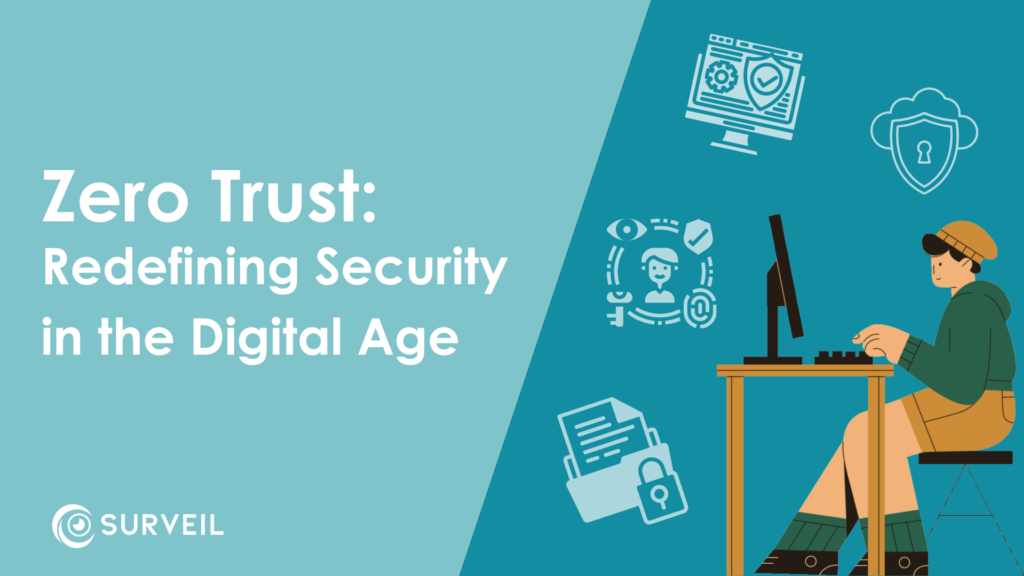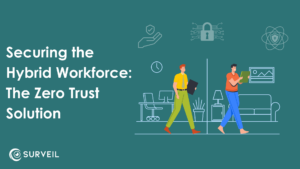What exactly does your IT team mean when they refer to ‘Zero Trust’? And why is it so high on the security agenda? Let’s take a look.
Business reliance on technology has always existed, but the last few years has seen an explosion in digital transformation, concentrated on the likes of remote working and employee enablement. Concurrently, this new age of technological reliance has resulted in increased collections of data being shared across multiple platforms, a greater need to manage identities, and evolved security threats. Naturally, we all need to keep up with this changing landscape.
So, What is Zero Trust?
Zero Trust is a security model in which all users, devices, and applications are assumed to be untrustworthy and must be authenticated before access is granted. At its heart, Zero Trust has three core principles, which Microsoft highlights as being:
- Verify explicitly: Always authenticate by the most data points available.
- Use least-privilege access: Keep access to ‘just enough’ and ‘just-in-time’.
- Assume breach: Leverage analytics for visibility and minimise fallout.
This approach – which large companies such as Microsoft have implemented across their products and services – alters the business’ very culture to shift how employees navigate data and react to threats. It’s also a remarkably easy methodology to stick to; simply assume the worst, and you can minimise risk.
Why is Zero Trust Important in 2023?
Zero Trust has been growing in popularity for years now, but we find ourselves in post-unprecedented times. In 2023, modern workplaces are more reliant than ever on remote or hybrid working models, each of which requires a different approach to security than in the past.
As the Zero Trust model goes by a ‘never trust, always verify’ approach, it can scale with digital transformation, protecting all aspects of the evolving digital space. Specifically, implementing a Zero Trust architecture addresses very current challenges such as hybrid cloud environments and securing remote workers, delivering both significant security improvements and some much-needed peace of mind.
The Pillars of the Zero Trust model
So, how can you implement a Zero Trust model in your business? While the aforementioned principles of ‘Verify explicitly’, ‘Apply least privileged access’ and ‘Assume breach’ are important, there are also six key pillars on which the Zero Trust architecture has been built, covering multiple defensive layers.
Identity – Ensure that only the people, devices and processes that have been granted access to company resources can access them.
Endpoints – Guarantee that the security compliance of the hardware accessing company data on corporate devices is assessed.
Applications – Review local and cloud-operated applications, ensuring that the software-level entry points to company data are secure.
Network – Keep in mind that just because something is connected to an internal network, doesn’t mean it should be trusted implicitly. All internal communications should be encrypted, access should be controlled by policy, and threat detection should be done in real time.
Infrastructure – Detect potential threats and irregularities, automatically block and report unsafe behaviour, and utilise least-privilege access principles.
Data – Protect all company data from all risks of a security breach when connecting your equipment to all environments – whether that’s in the office, on the cloud, or virtual.
What’s not to love about Zero Trust? By adopting to its principles and adopting them into your company’s security programme, it’s possible to take a smarter, more cautious stance on risk management.
While the question of Zero Trust’s importance is likely to be just as relevant in 2073 as it is 2023, we’re confident that the answer will stay the same: it’s a model that can secure your digital transformation even as our global technological reliance evolves. That’s definitely worth looking into, right?
Looking for the insights to underpin your next security improvement? Need to surface resources to reinvest in securing your cloud environment? Get in touch to find out how Surveil can help.



